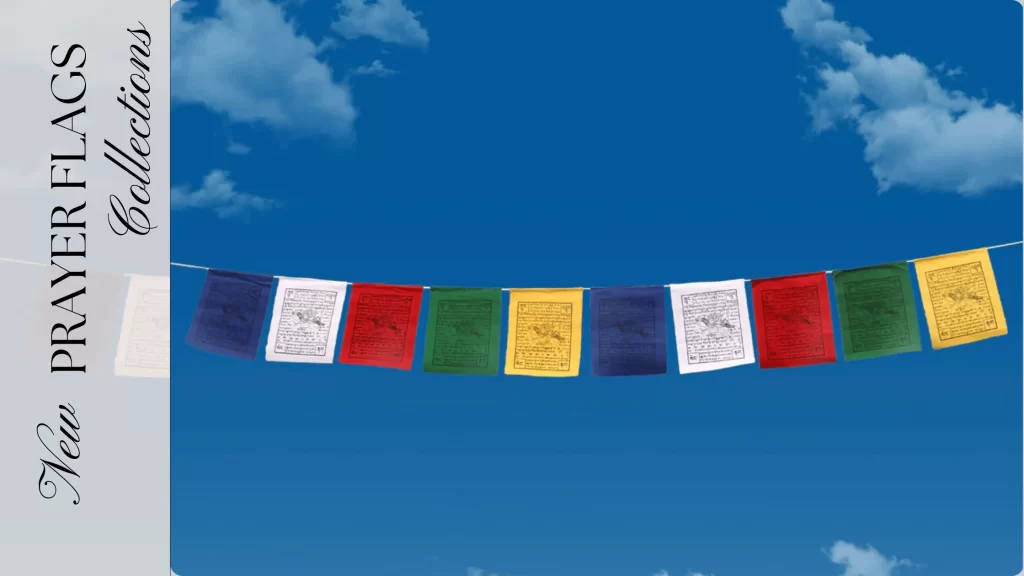Buddhist Prayer Flags
Buddhist Prayer Flags
Buddhist prayer flags are colorful pieces of cloth adorned with prayers and mantras, traditionally found strung high in the mountains, particularly in the Himalayas. These flags serve multiple purposes, including blessing the surrounding areas, spreading goodwill through the wind to neighboring countries, and promoting values such as peace, strength, wisdom, and compassion. It is a common misconception that prayer flags carry messages to the gods; in reality, they are meant to invoke positive energies into the environment.
Key Facts About Prayer Flags
Understanding the significance and characteristics of prayer flags is essential, especially when engaging with cultures that hold them dear.
One essential aspect of prayer flags is their color symbolism, with each hue representing a specific element:
- Red symbolizes fire
- White represents air
- Blue denotes wind
- Green signifies water
- Yellow symbolizes earth
Additionally, each color correlates with a directional aspect: North, South, East, West, and Center. Prayer flags are also closely associated with the mantra “Om Mani Padme Hum,” an important chant in Buddhism. Each word in the mantra carries a distinct meaning:
- Om signifies the sacred symbol
- Mani represents the jewel
- Padme stands for the lotus
- Hum embodies the spirit of enlightenment
While the mantra does not have a singular translation, it encompasses core values such as ethics, compassion, diligence, patience, wisdom, and renunciation. Chanting this mantra during meditation is believed to help alleviate issues such as pride, jealousy, greed, aggression, and ignorance.
Another important characteristic of prayer flags is that they are meant to flutter in the wind, representing spiritual movement. Receiving a prayer flag as a gift is considered an honor, and it is typically believed that one should not purchase a flag for personal use; it should be given as a gesture of goodwill.
There are two primary types of prayer flags: horizontal and vertical. It is viewed as disrespectful for the flags to touch the ground. If the colors begin to fade, it is interpreted as a sign that the prayers have been successfully transmitted. The optimal time to hang prayer flags is during the Chinese New Year to promote positive energy for the year ahead.
How to Hang Prayer Flags
Before hanging the flags, it is customary to have them blessed by a lama and to write the names of those for whom prayers are being offered. The act of hanging prayer flags is linked to rituals that promote prosperity, and they should always be treated with respect, never allowed to touch the ground. Once they have served their purpose, burning the flags is a respectful way to dispose of them.
Certain days are considered especially auspicious for hanging prayer flags. These include the first two weeks following the Tibetan New Year (which is believed to be beneficial for miraculous events), as well as the seventh and fifteenth days of the fourth lunar month (known as Saga Dawa), and the fourth day of the sixth month and the fifteenth day of the ninth month, which are associated with key teachings of Buddha.
While the choice of the appropriate day for hanging the flags is significant, the primary focus should always be the intentions behind the act. The foremost goal when hanging a prayer flag is to share positive wishes and to do so with genuine intentions.
Popular Prayer Flags
| Prayer Flag | Description | Link |
|---|---|---|
| Mini Prayer Flag | Flags representing the seven chakras, promoting balance and healing. | View Collection |
| Buddhist Prayer Flag | Traditional flags used to spread peace, compassion, and goodwill. | View Collection |
| Lungta Prayer Flag | Flags symbolizing the wind horse, carrying prayers and blessings. | View Collection |

